


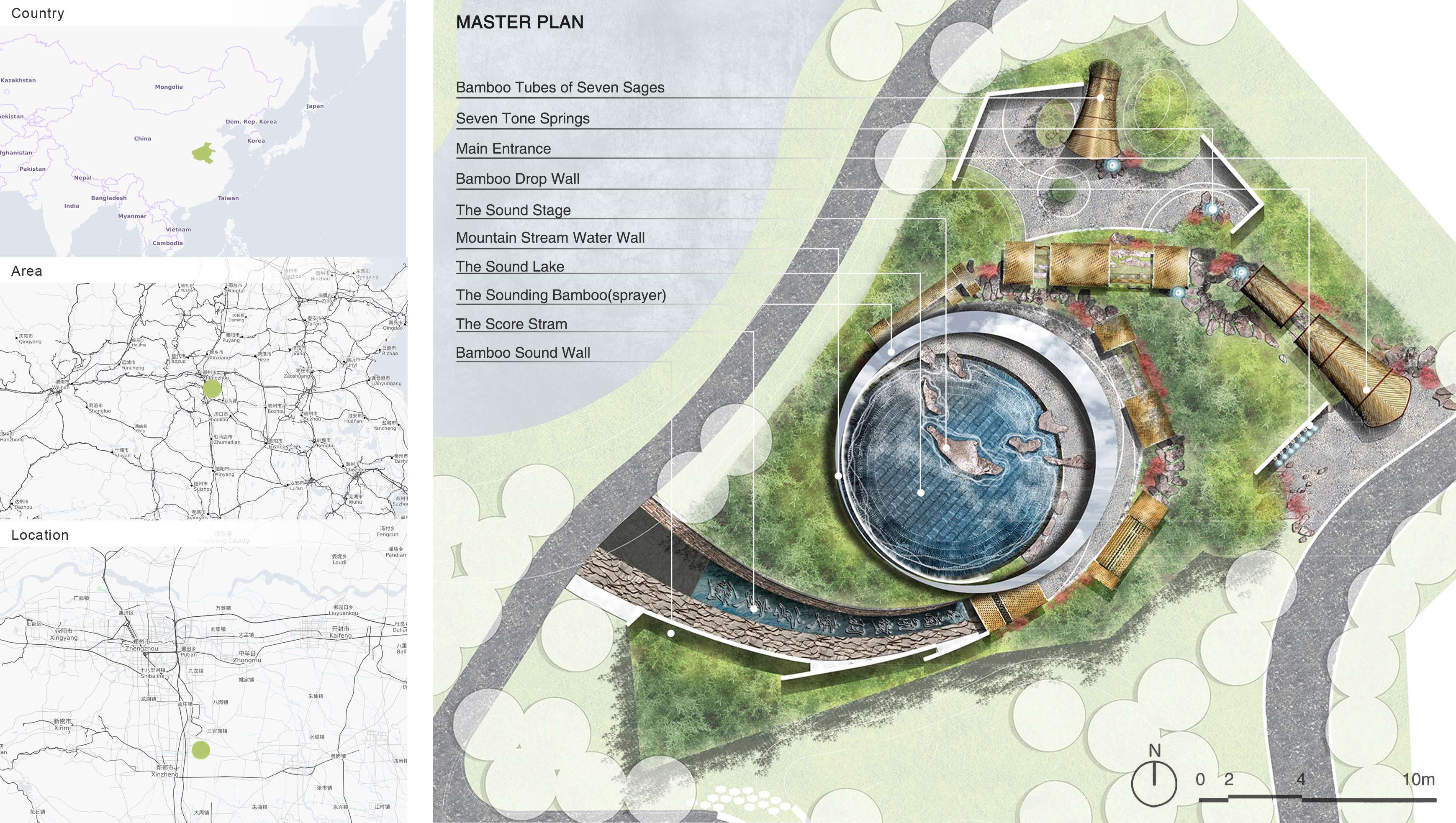
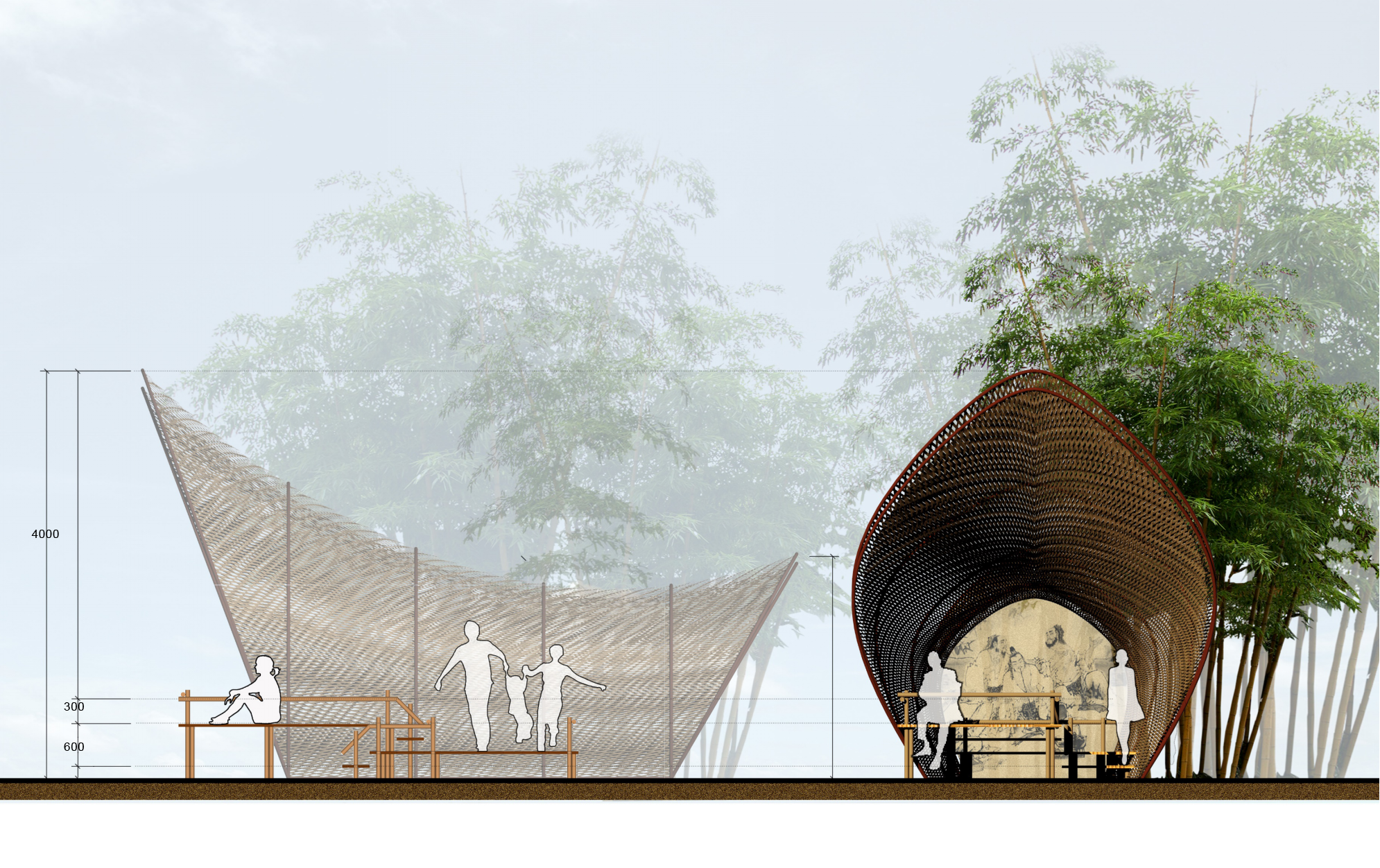
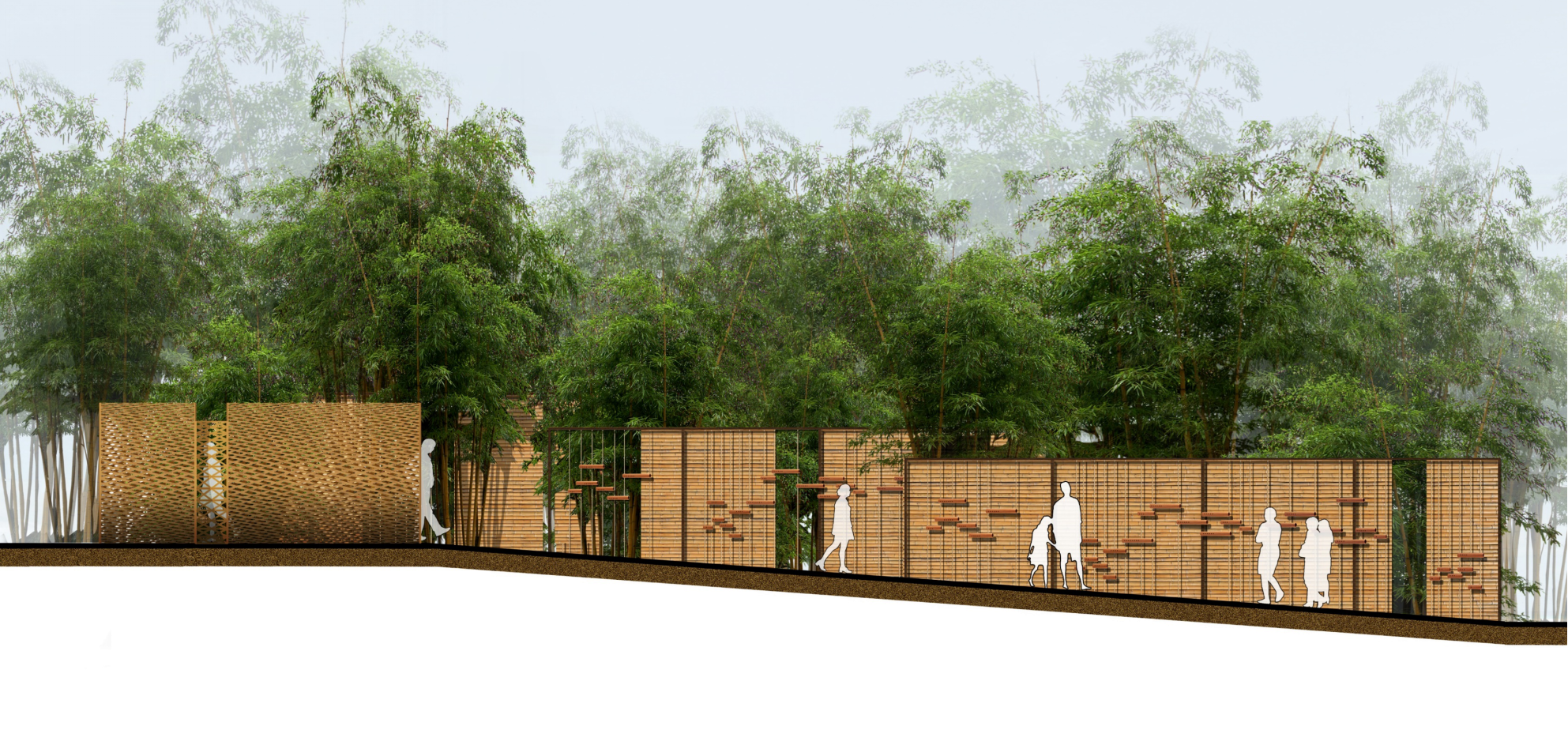

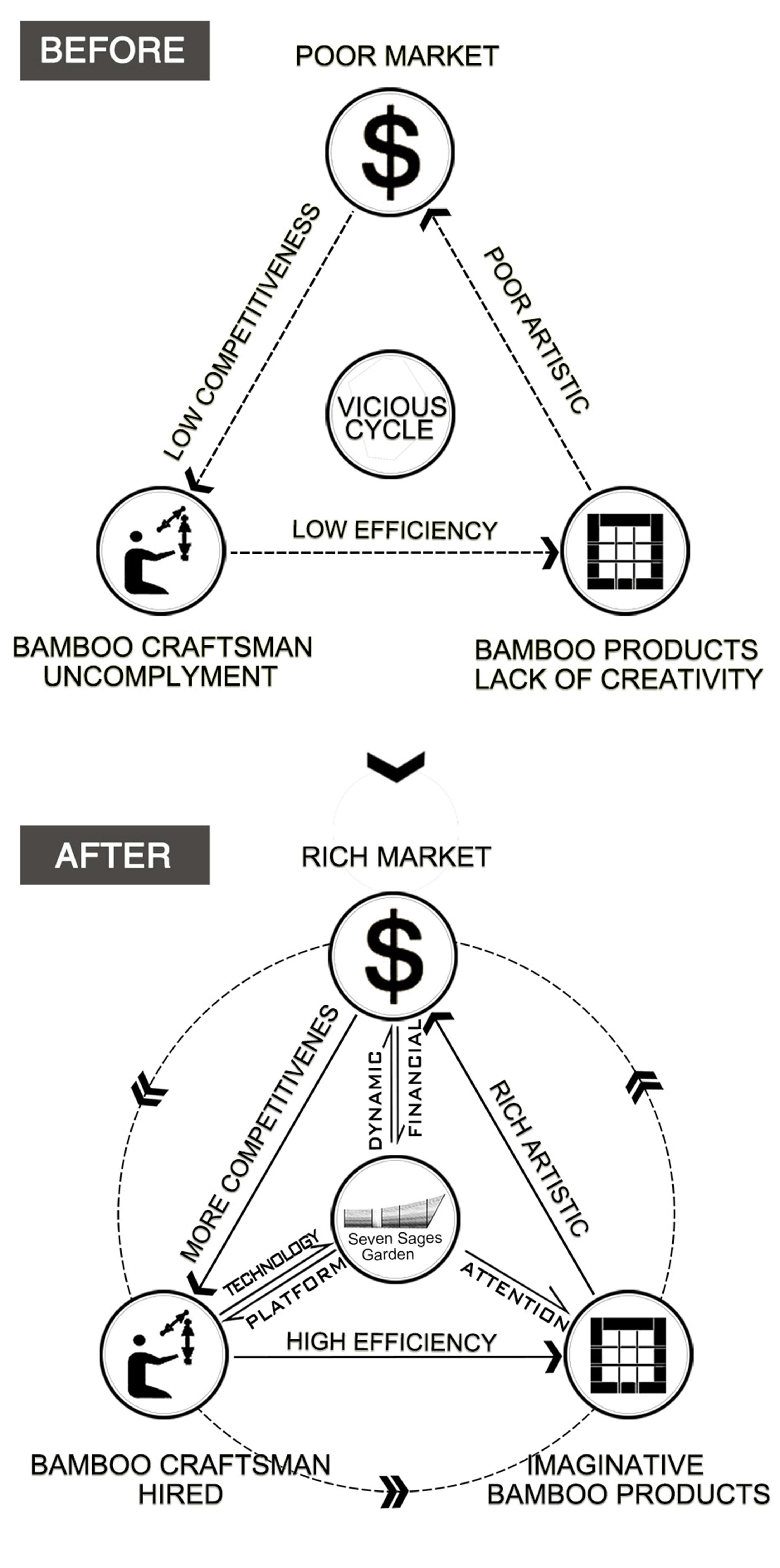
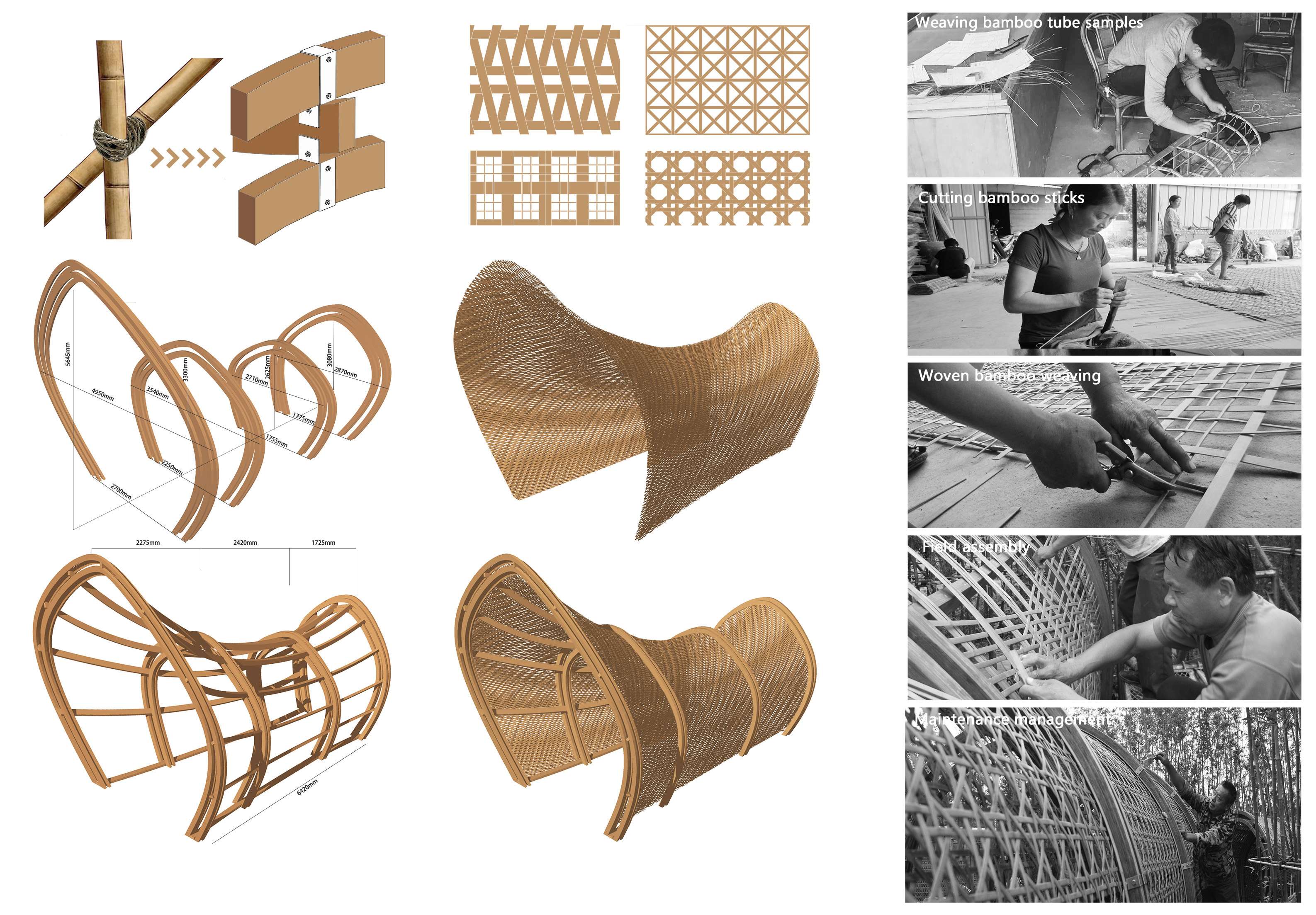

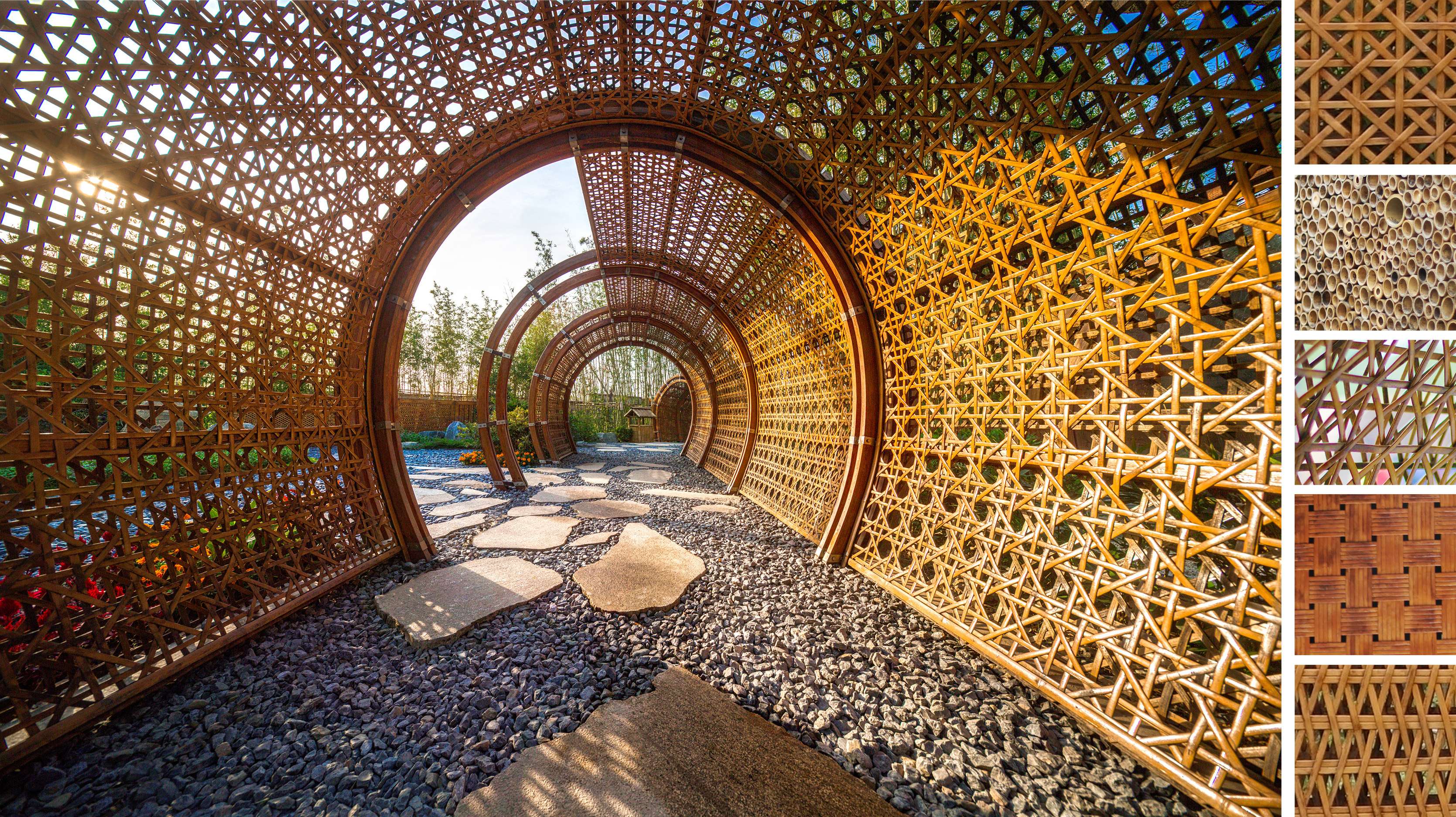
The Renaissance of Handicraft's Cultural Heritage in Landscape Architecture Subhead: Seven Sages Garden of The 11th China International Garden Expo
The Renaissance of Handicraft's Cultural Heritage in Landscape Architecture Subhead: Seven Sages Garden of The 11th China International Garden Expo
The Renaissance of Handicraft's Cultural Heritage in Landscape Architecture—
Seven Sages Garden of The 11th China International Garden Expo
Project Statement
Seven Sages Garden of The 11th China International Garden Expo covers an area of 1453 ㎡. This project explores and demonstrates the application of Boai Bamboo Arts in the modern landscape. So that people may understand and care more about this disappearing handicrafts and cultural heritage.
Different from the traditional design – construct operation model, the project will make sure parametric non-linear landscape design and hand-weaving skills cooperate with each other, using modern methods and traditional techniques together to guide the image design. n the process of construction, the project integregated Jiaozuo Boai Bamboo’s teaching, display and promotion, which effectively reduces the project cost and plays a big role in protecting and inheriting the bamboo cultural heritage.
With the help of the platform of China Expo, the project promoted the design mode of heritage conservation driven by landscape architechtures, and produced direct social benefits. It has a profound and long-term influence on the future development of bamboo arts and provides new ideas of handicraft protection and cultural innovation for all sectors of the society.
Project Narrative
Cultural heritage is an important symbol of the historical and cultural achievements of a nation, and issues related to the protection of cultural heritage often require the involvement of landscape design. The cultural heritage itself includes not only the physical cultural heritage but also the intangible cultural heritage. With the development of industrialization, the intangible cultural heritage, traditional handicrafts, are gradually disappearing. Therefore, as a landscape designer, we hope to explore a new model of heritage conservation driven by landscape architecture.
1.Project Profile
This project is represented by the garden of JiaoZuo in The 11th China (ZhengZhou) International Garden Expo. With the area of 1453 square metres, it is located in the west wing of the Expo. City exhibition garden is China's unique exhibition category, the purposeof which is to show the characteristics of the city. Designers hope that through this project design and implementation process, the garden can display Jiaozuo’s unique cultural heritage, and explore the inheritance of traditional handicrafts in modern landscape.
2.The Dying Handicrafts – JiaoZuo Boai Bamboo Weaving
The design team of this project had conducted a series of thorough investigations of JiaoZuo’s culture, and decided to take the bamboo culture in Boai county as the core of culture expression.
The bamboo culture in Boai county had more than 2000 years of glorious history, and bamboo plaited articles had been widely used in people’s daily life. Due to the exquisite technique, these bamboo plaited articles was once specially made for the royalty.
However, with the popularization of modern industrial products, the cheap, fast- produced plastic products soon replaced both time – comsuming and labor – consuming bamboo plaited articles. Even for those who pocess the skills of bamboo weaving, the skill is of little use.
In the preperation stage, the design team had conducted a series of investigation with regard to the inheritance of the bamboo weaving heritages. Discovering that in the whole county, 693 people can master the technique of bamboo weaving. One-tenth of them are still engaged in the tranditional bamboo industry. The locals call these practitioners: bamboo craftsmen. Currently they make objects like cages and bamboo curtains that target peasants in villages and counties. But the poor market had forced more and more craftsmen to give up on these traditional skills. Thus, bamboo craftsmen, bamboo weaving techniques and bamboo crafts market had formed a vicious circle. Therefore,the team began to re-examine bamboo art – the ancient cultural heritage, hoping to explore and demonstrate the application of bamboo arts in the modern landscape on the platform of China International Garden Expo. So that people can understand, recognize and inherit this dying tranditional cultural heritage.
3.Landscape Architecture Project with Social Benefits – Demonstration, Training and Heritage
At the beginning of the project, the design team had to face many challenges. The trickiest of all is that if the project follows the common pattern, to let the proprietor hire a construction team to complete the project, the costs of which will be high and the construction effects will be difficult to control. Therefore, designers are in an urgent need to transfer the traditional project model. After a period of visits and surveys, the team summed up the key initiatives to promote the progress of the project – let bamboo craftsmen involved in project operation.
The project was divided into five stages. The first stage, relying on the government of Boai County, designers conducted a census of the bamboo craftsmen who poccess weaving skills and decides to engage in bamboo art career. The team also sets up a bamboo weaving association and elected the chairperson with organizational skills and professional skills. The second stage, free tuition provided by associations. Associations would teach the weaving patterns of bamboo epidermis that was exhibited in the Expo and weaving process used in the modern machinery to villegers. The third stage is to select outstanding works of students, and reward them according to their work. The fourth stage, the construction side would employ experienced bamboo craftsmen to construct bamboo frames, and install woven bamboo epidermis made by students. The fifth stage, the project would organize students to the construction site for sightseeing and studying.
The new project model achieve a win-win situation for both project team and- bamboo craftsmen. To the project itself , not only the cost was saved, the accuracy of bamboo weaving was also asured. This model achieves a good landscape effect and displays the traditional culture with regional characteristics.For the craftsmen, the project provides an effective way for local income generation. After Jiaozuo garden in the Expo, their income had increased for 3-4 times than 126 dollar/m before. More importantly, the whole process allowed the participation of craftsmen to see bamboo art applied to a new field that had never been before. From the small objects to the beautiful landscape architecture, these new developments can inspire them to take the initiative to explore new means and new applications of products.
Project implementers also carried out an in-depth propaganda about Jiaozuo exhibition garden and bamboo culture in Boai county amd surrounding counties and districts. So that more talented villagers could find a good way to make a living, at the same time, pay more attentions to new ways for the development of traditional bamboo weaving.
Through a series of exhibitions and trainings, the traditional bamboo culture could be preserved and inherited, through which, direct social benefits were produced.
4.The Image Combination of Tradition and Modernity - Parametric Nonlinear Landscape Design and Hand Knitting
The complicated structures and various forms of bamboo tubes make it hard to express the designing content in a conventional method. Thus, designers usually use parametric software for modelling. With the support of digital tools, designers can take spatial forms of non-linear landscape into consider, simulate a variety of pore structures, and deduce the changes of lights and shades in order to choose the best solution for the final result of hand weaving of bamboo epidermis. The project will make sure parametric non-linear landscape design and hand-weaving skills cooperate with each other, using modern methods and traditional techniques together to guide the image design.
In Jiaozuo exhibition garden, designers put seven non-linear bamboo tubes in a lush bamboo forest.
Back in ancient times there were a group of literatures called Seven Sages, living in Jiaozuo’s bamboo forest. These seven bamboo tubes are deeply co-nnected with the Seven Sages of the bamboo forest. In the garden, visitors can meet with each other through seven different passages. Which expressing the artistic conception of bosom friend gathered around and the banquet in the bamboo forest.
5.Using the Expo as a Platform – the Promotion of Heritage Design Patterns Promoted by Landscape Architecture
As a exchange event and professional exhibition in the industry, the Expo is the beacon of landscape architechture. The 11th China International Garden Expo has attracted nearly 5 million visitors. The design content in Jiaozuo garden intuitively displays the local heritage and traditional culture, which plays a significant role in the promotion of urban image. In the meantime, with the help of the platform of the Expo, this project has extensively promoted the design of heritage protection driven by landscape architechture and brought direct social benefits. Boai County has now set up three bamboo associations, with members of 70 people, who will continue to engage in bamboo art career. The design team of the project had carried out the promotion and popularization of bamboo culture among people aged 20-60 in 3 villages and towns around Boai County. After feedbacks from governments of villages and towns, large number of villagers had a brand new understanding of bamboo culture, and expressed their willingness to learn bamboo weaving skills. This will have a profound and long-term influence on the future development of Bamboo Arts.
